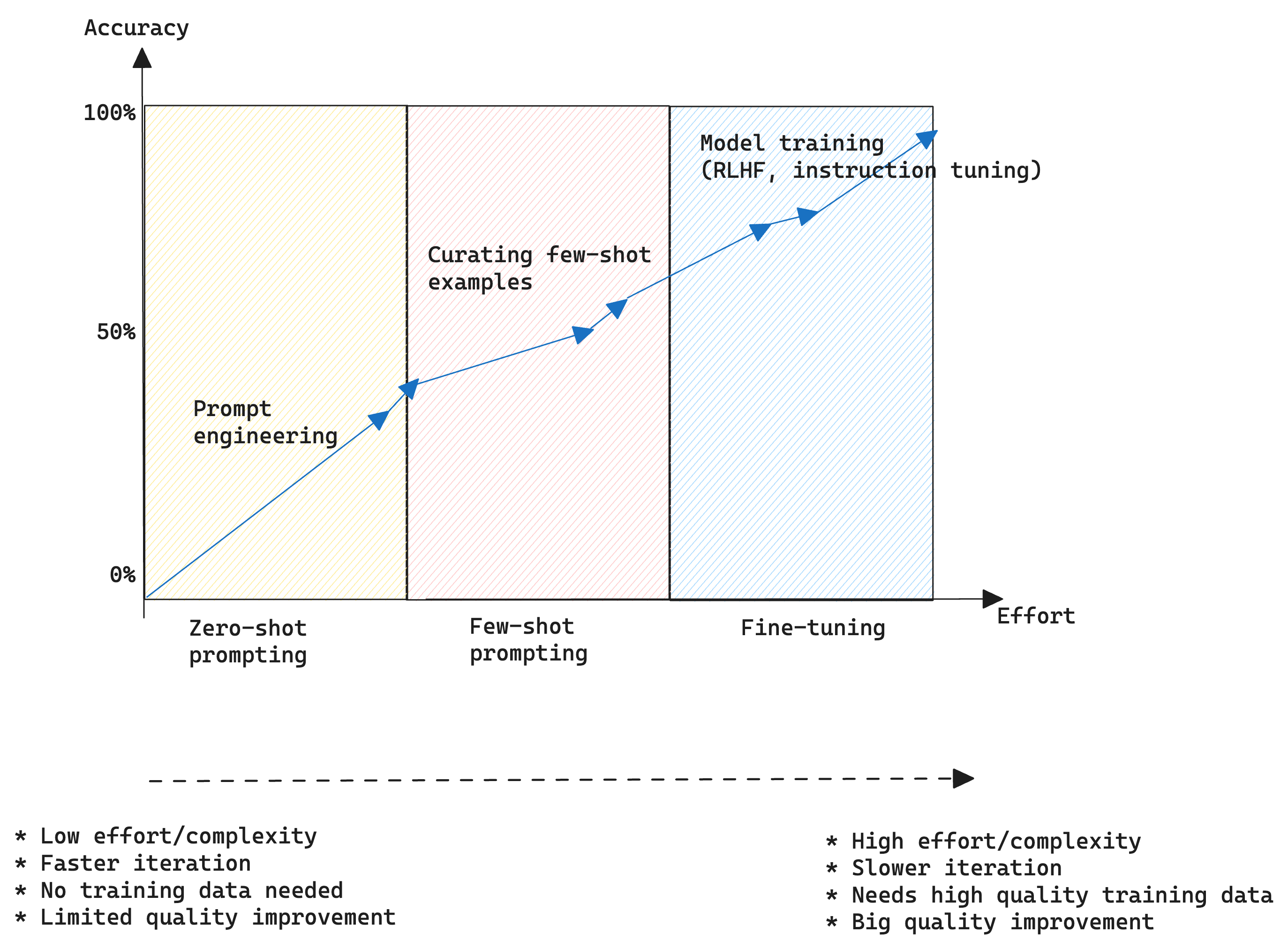Skip to main contentWhat is LLM Finetuning?
Finetuning is the process of taking a pre-trained language model (LLM) and further training it on a specific dataset to adapt it to a particular task or domain. This involves adjusting the model’s weights based on the new data, allowing it to learn patterns and nuances specific to the desired domain.
Benefits of Finetuning
Finetuning offers several advantages when compared to using the base LLM directly:
- Improved Performance: By training the model on task-specific data, finetuning can significantly enhance the model’s performance on that task, leading to more accurate and relevant outputs.
- Customization: Finetuning allows for the customization of the model to better align with specific requirements, such as industry jargon, user preferences, output style and format etc.
- Efficiency: Once finetuned, the model can generate more precise results without needing extensive context in the input. This means lower token usage, making it faster and cheaper.
When to Finetune
Consider finetuning a base LLM in the following scenarios:
- Specialized Tasks: When the task requires domain-specific knowledge or terminology that the base model may not be familiar with.
- High Accuracy Requirements: When the application demands high accuracy and precision, such as in medical diagnosis, legal document analysis, or financial forecasting.
- Consistent Output: When consistent and reliable output is crucial, and in-context learning may not provide the necessary stability.
Prompt engineering vs Few-shot learning vs Finetuning
When leveraging LLMs for specific tasks, you have multiple strategies to improve performance:
- Prompt Engineering: The practice of crafting precise and optimized input prompts to achieve desired model outputs without modifying the underlying model.
- Few-shot Learning: This involves providing the LLM with a few examples (input and expectedoutput pairs) along the guidelines in the prompt. One way to think about few-shot (in-context learning) is that it is a form of “reasoning by analogy”.
- Finetuning: This involves adjusting the LLM’s parameters by training it on a domain-specific or task-specific dataset.
Each strategy has its own trade-offs and is best leveraged at different stages of development (image credit):



